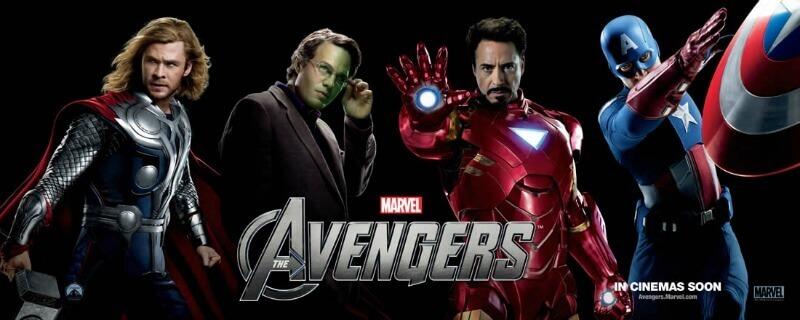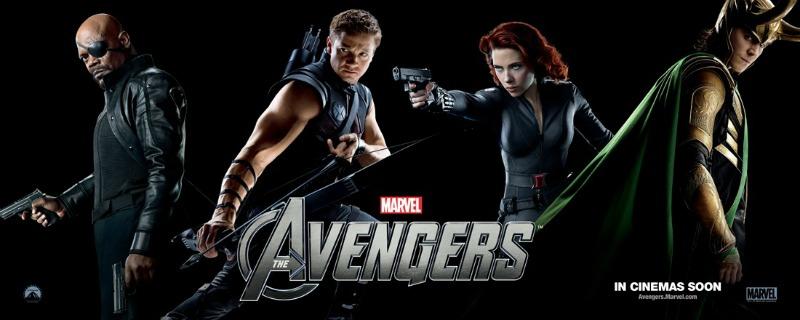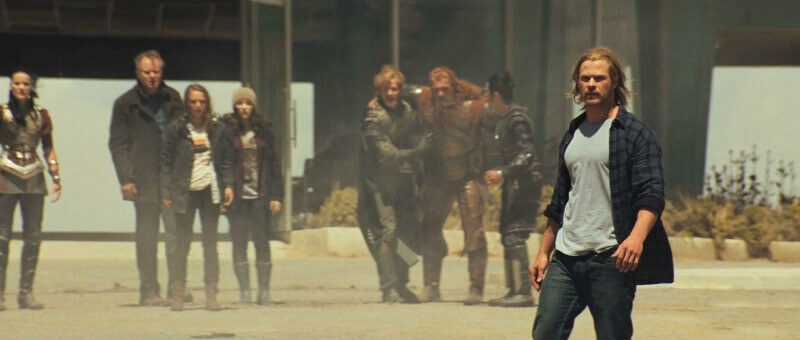As a movie producer, Kevin Feige has been involved with almost every movie involving a Marvel character for the last decade and a half.
From the highs of X-Men and Spider-Man 2 to the, um, other things, like Fantastic Four: Rise of the Silver Surfer, Feige has been behind the scenes. He is also the guy perhaps most responsible for the crazy notion of crossing over a half-dozen major superhero movies into one continuous universe, culminating in The Avengers.
Feige is also at least partly responsible for the unusual line-up of directors who have taken on Marvel movies. After Joss Whedon’s Avengers, Shane Black takes over the Iron Man franchise from Jon Favreau.
That’s only the latest interesting move from the guy who has built Marvel into a machine for turning comic books into fun popcorn flicks.
Wired: How did you get the cinematic crossovers together?
Kevin Feige: It started very small, with Clark Gregg‘s character, Agent Coulson, because we wanted a government organization to be sniffing around what Tony Stark was doing in the first Iron Man movie. Tony’s a big weapons industrialist, and we know that that would get the attention of the government. So we thought, “Hey, we’re the Marvel universe, can we use SHIELD?” Clark ended up doing such a great job that we wrote more and more scenes for him during production. And either just before production or at some point during that I got a call from Sam Jackson’s agents, “Hey, anything for Sam? He’s a big fan, loves doing these movies.” So I asked, “Why don’t you check in with him, is there any chance he’d want to do a fun little cameo for us in this one?” He said yes.
I then went to Jon Favreau, the director, and said, “Hey, what do you think of doing this fun little cameo? We’ll do it at the end of the credits.” Because it was important to us, job No. 1, introduce Tony Stark and the Iron Man armor to the worldwide moviegoing audience, right? That was the only agenda. So we didn’t want it to distract. We already had this great through-line with Clark Gregg, leading up to him saying, “Call us SHIELD,” and having fun with the name. So we thought we’d put it at the end of the credits.
At the end of the credits, Samuel Jackson walks in the house and announces what by that point in our process we’d realized: We have all of it. And within a week of Iron Man coming out there was a sidebar in EW or something explaining who Nick Fury is. That was when I realized, oh my! This is working. This is not just the fanboys that are going to be in this. There’s something that is exciting about this kind of thing because it hasn’t happened before. Look, comic book fans are smart and they are discerning. And they are not going to obsess over something for decades if it’s not delivering. But you know, the amount of people that will drive to a place and buy a comic book is much smaller than people who will drive to a movie and see a movie. So even before Marvel Studios, I gambled that if we were able to put what was on the page up on the screen, people will respond to it the same way, whether they read it not.

But arguably you don’t have the heavy hitters at Marvel Studios. You don’t have Spider-Man, you don’t have the X-Men, and you don’t have the Fantastic Four.
Well, look, clearly we would prefer everything be at home, so to speak. But all the contracts are different. Some of them have very firm reversion dates, and some of them we don’t expect to get back any time soon, let’s put it that way. We’re fine with that. We have a great relationship with Sony and Fox. Would we like to have them all back? Sure. But we are more than comfortable with the way things stand now, because it worked out pretty well, right? The Avengers is a gargantuan part of the Marvel Universe, as big a part or bigger part than X-Men, bigger than Fantastic Four. There’s no doubt that Spider-Man is the most well-known, but in terms of families of characters, Avengers is bigger. Yes, the book has been around so long that almost every single character has popped in and out at some point. But there was a little bit of planning and a lot of luck that we ended up with Iron Man, Hulk, Thor, Captain America, Hawkeye, Widow, Fury, SHIELD, all within our rights. Because that obviously led up to The Avengers.
At San Diego Comic-Con in 2006 we were in one of the smaller halls, 2,000 people or so. I had been going for many, many years with other studios for the Marvel films but this was our first Marvel Studios panel. Jon Favreau was on the panel talking about Iron Man, and Louis Leterrier was talking about The Incredible Hulk, and Edgar Wright was talking about Ant Man. And somebody asked, “Could the characters cross over? Is this person ever going to meet this person?” I was asked, “Are we ever going to see the Avengers on screen?” And I said, “Who knows. This is a big new experiment for Marvel. But it’s no coincidence that we have the rights to Iron Man, Hulk, Thor, Cap –” and the whole audience started cheering. That was one of the moments where I went, boy, if only, if only we could actually sort of pull this all together.

How do you coordinate all that? Is there a writers’ bible? How do the creative folks respond to your making it all work together?
People come in expecting the bible to be a hell of a lot bigger than it actually is. The secret, the not-so-secret secret, is each individual film is actually more important than the whole of the connected films. Because if any one film doesn’t work the house of cards comes down. So the most important thing is each individual movie. Loki is the main antagonist, interesting, layered, tragic figure in Thor. So of course he’s going to be the bad guy in Thor, it makes all the sense in the world. Loki is the reason the Avengers were brought together in Avengers No. 1, so it made sense.
Could it be someone else if we’d never made a Thor movie before that? Probably. But was it sort of laid out there perfectly for us to take advantage of? Yes. The Cosmic Cube is, you know, one of the primary McGuffins in the Captain America stories, in the Red Skull stories. So, tying it into the mythology of Asgard was helpful from a storytelling device, because in the comics I don’t even want to spend 45 minutes explaining to you what its backstory is.
Anyway, that felt like a natural way to connect it to Thor and a way to connect it forward. In Iron Man 2 there’s a scene where Tony is flipping through his father’s old notebook. I told Jon that we thought the young version of Howard Stark was going to be a character in Captain America, because we need a gadget guy, sort of a Q for SHIELD. I said, “What if the prop guy just draws a little cube on this page of this notebook? You never have to mention it, never even talk about it, it’s just there.” Jon said, “Sure, whatever.” The trick is, the Easter eggs have to enhance the experience for those who know what they are, but not detract from the experience for those who don’t.
Do you ever look at a script or rough cuts and realize you have to dial it back?
We usually do that in the script stage. But there have been cases, one in particular in Thor. Selvig has a couple of lines of dialogue to Jane, and he ended up name-checking three Marvel characters or something. We said, “No, it’s too much. That starts getting distracting.” But usually it’s in the scripts. And by the way, often times – not often, but occasionally – you will need a device to propel the story forward anyway. You have a military organization or a science organization? Well, let’s call it SHIELD. Bad guys? Let’s call it AIM. Stuff like that.
Well, if that’s the case, what’s the relationship like with the comic book side of the company? Is there back-and-forth?
Absolutely. That started on Iron Man.
And then as we were in script development, and villains were changing and storylines were changing, I’d always go back to the comics. There’s almost always at least the kernel of an idea that can solve something. And I said, well, wait a minute, there are people on the other coast there – metaphorically, because they’re everywhere now – who are doing what we’re doing: thinking about Tony Stark every single day for storylines. Let’s bring them out. We invited a group of them out to sit around and have a conversation based on the draft and based on specifics. And that became a more formal process. Now it’s a group that you can see in the credits listed as the creative committee.
With Time Warner owning DC and with Disney owning Marvel, all these comic book characters have become valuable intellectual property, right?
I think that’s been the case for a long time with Superman, with Batman and with Spider-Man even before the movie, with the Underoos and the pajamas and all of that.
I don’t think Disney will mind this – I’ll make this analogy because I’ve read it in Disney publications and Disney histories. When Mickey Mouse became the corporate mascot, some of his more edgier stuff, or even when he was just sort of a mischief maker, was put aside. Now I can hug Mickey when I enter Disneyland and it’s great. Beware of that happening on any of these superheroes, right? And Marvel is very conscious of that. They all have their backstories and they all have their flaws, their foibles. Take those away, they’re not Marvel characters any more.
Sure. But Disney wouldn’t want you to change, right? Because they’re counting on you to reach boys, the demographic that they’ve never been able to get.
Yes, they want us for what we do, that’s for sure. And it’s been two years now. Early on, Bob Iger [the head of Disney] said the same thing to us that he said to Pixar, which is, “If it’s not broke, don’t fix it. We want you for who you guys are.” They’ve been very true to that, and they couldn’t be more supportive. And Avengers is the first one fully marketed and distributed by Disney. Paramount did a magnificent job for us on those first four movies, but in the back of somebody’s head there’s always the idea that they don’t have everything on the line. Disney does, and is fully invested in it.
What’s in the pipeline past the sequels to the ones that already exist?
The only two official ones on the schedule are Iron Man 3 and the next Thor film. And there’s another Captain America film in the works. Cap’s in the modern day now. So if we looked at war movies from the ’40s as our inspiration for the first Cap, the next one we’re looking at very different movies, very different inspiration. So it will almost be a different genre of film, which I’ve never seen before in a sequel.
You’ve done well so far, but what do you worry about going wrong? What are the pitfalls?
Look, the Bixby Hulk series. I love it. But do you remember when Thor came into that TV movie?

And Daredevil. Yeah, I remember those.
Before our film, Adventures in Babysitting was the most attention Thor ever got in a feature film.
It was cool, shockingly. But that just means we have to be vigilant about it being silly. And guess what? They look silly through the first three costume tests. Starting from the design phase all the way through to when it’s lighted, it’s always trying to make it so that on the day it works.
On the Spidey movies it was a hard lesson. There were moments in that first film where Spidey is just on the ground walking or running from A to B in a straight line, on the ground, in a wide shot. The illusion is broken: Wait a minute, that’s a guy with pajamas running around. I think any filmmaker is aware of those kinds of things.
But the truth is I root for every single one, whether it’s our movies or not, because while you and I know the difference between who publishes what, I’ve been in supermarket checkout lines where one of our characters is on the cover of a magazine, somebody says, “Is Green Lantern in the Avengers? Is Aquaman in that one too?” People don’t know. So I want them all to be great.
Chris Nolan’s Batman is the greatest thing that happened because it bolstered everything. Imagine the one-two punch in 2008 of Iron Man and Dark Knight? It was great. Six years earlier I was having conversations with studio execs where they’d say, “Why don’t you come work for us? These comic book movies can’t last forever. It’s probably towards the tail end.” And I, being with big bright-eyed naiveté would go, “I don’t know, I think we can do more. I think there’s more fun to be had.”